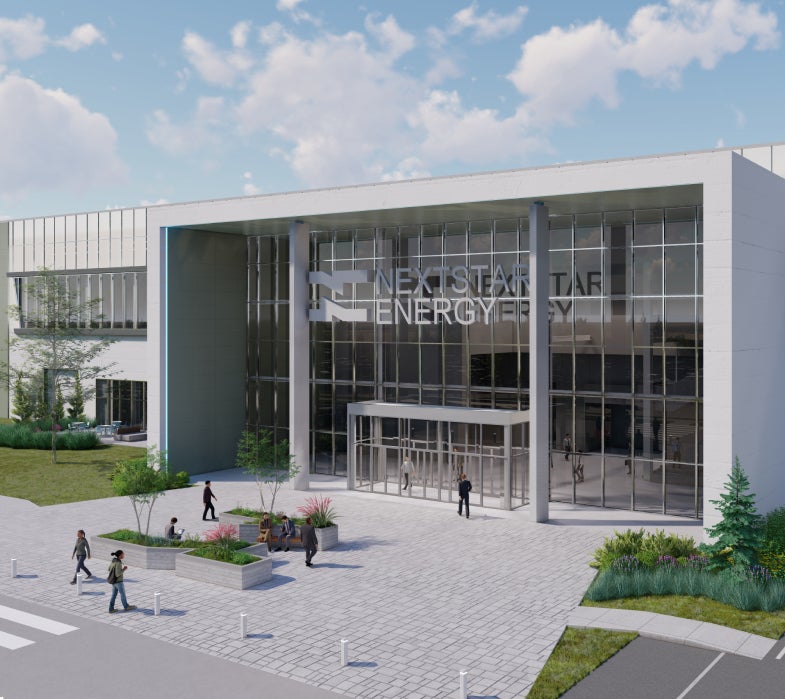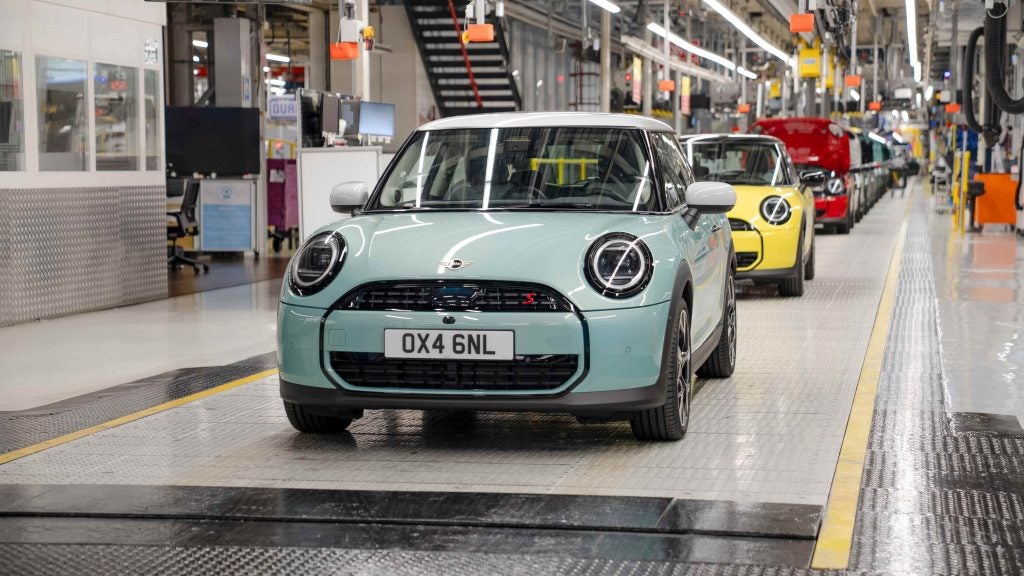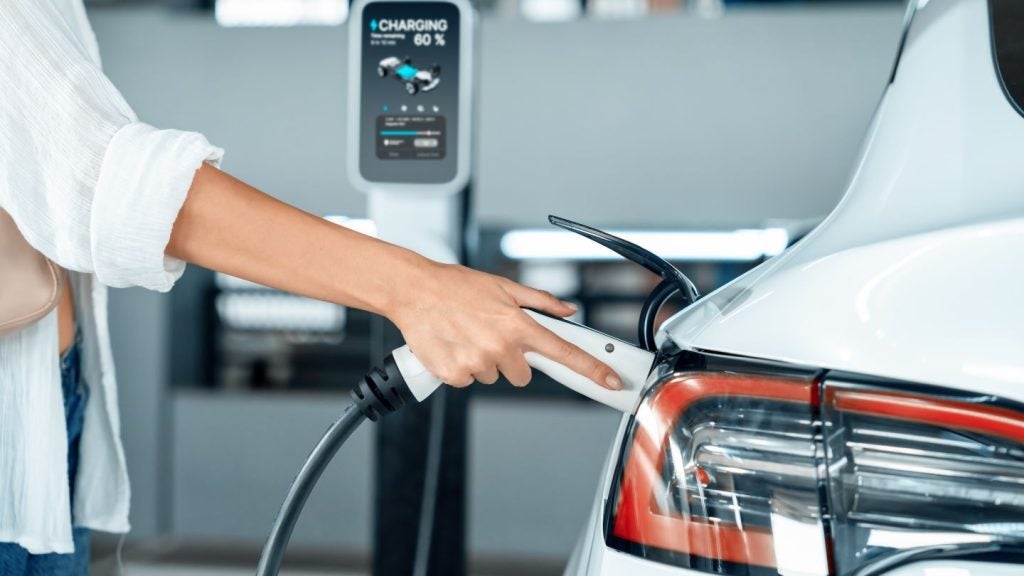 Ten years ago Honda looked to be in trouble. Its founder, Soichiro Honda, had recently passed away and the company was in poor financial shape. Honda was viewed as ripe for takeover. But it has eclipsed Nissan as the number-two car brand in Japan, retained its independence and is now making record profits. This week, the company unfurled its 3-year mid-term business plan with a clear focus on expanding overseas operations. It is certainly ambitious and in places, downright bold.
Ten years ago Honda looked to be in trouble. Its founder, Soichiro Honda, had recently passed away and the company was in poor financial shape. Honda was viewed as ripe for takeover. But it has eclipsed Nissan as the number-two car brand in Japan, retained its independence and is now making record profits. This week, the company unfurled its 3-year mid-term business plan with a clear focus on expanding overseas operations. It is certainly ambitious and in places, downright bold.
Adopting “Spirited Independence” as the theme for its 3-year mid-term business plan, Honda’s strategy focuses on increased vehicle output in Asia and North America. Also, Honda is betting quite heavily on developing Asia as a low-cost manufacturing base that can be successfully integrated into its global manufacturing operations. A new plant will be set up in China to produce small cars solely for export. Honda will certainly have to deal with quality issues in China, which are very much more pressing when manufacturing for export. In the ASEAN region, Honda is investing heavily in parts operations that it believes will enhance its global competitiveness. It all amounts to a bold strategy, but the strategy is coherent and builds on established strengths – like Honda’s motorcycle business.
20 million customers target for fiscal year ended March 2005
In this fiscal year – which ends in March 2004 – Honda says that it expects, across all divisions including motorcycles and power products, to supply Honda products to 15.4 million customers worldwide (the figure for the year ended March 2002 was 12.7 million customers). For the fiscal year ended March 2005, Honda is aiming for around 20 million new customers: automobiles at 3.4 million; motorcycles to 11 million customers; and power products to 6 million customers.
A breakdown of the sales target by business category for the fiscal year ending March 2005, compared to the fiscal year ending March 2002, shows motorcycle sales of 11 million units, an increase of about 5 million units; automobile sales of 3.4 million units, an increase of about 700 thousand units; and power product sales of 6 million units, an increase of about 2 million units – for a grand total of 20.4 million units.
How well do you really know your competitors?
Access the most comprehensive Company Profiles on the market, powered by GlobalData. Save hours of research. Gain competitive edge.

Thank you!
Your download email will arrive shortly
Not ready to buy yet? Download a free sample
We are confident about the unique quality of our Company Profiles. However, we want you to make the most beneficial decision for your business, so we offer a free sample that you can download by submitting the below form
By GlobalDataMotorcycles: Asian production and demand is the key to volume growth
Asia has been the source of rapid growth in Honda’s motorcycle business in recent years. In fiscal year 2000, Honda sold 4.3 million motorcycles worldwide, but by the end of March 2002, annual global motorcycle sales had expanded to 6.1 million units. This fiscal year the company expects to manage sales of 7.88 million units and plans 11 million units in fiscal 2005. Honda says that rapid growth is being fuelled by rising demand in emerging markets – especially in Asia.
“Honda also says that in the future it will be offering ‘lower priced products well below what is currently available’ “ |
In terms of offering products well below current prices, Honda says the “Wave Alpha” was launched in Vietnam at a lower cost than ever before by utilising parts from China and the local supply base in Vietnam. “Wave Alpha” will be introduced next to Thailand and the Philippines.
 Honda also plans to introduce a new scooter manufactured in China to the Japanese market at a price of less than 100,000 yen. This motorcycle, named “Today”, is scheduled for release on July 22nd. This will be the first motorcycle sold in Japan through the concept of “Made by Global Honda,” using parts from a number of Asian countries, including Japan and China.
Honda also plans to introduce a new scooter manufactured in China to the Japanese market at a price of less than 100,000 yen. This motorcycle, named “Today”, is scheduled for release on July 22nd. This will be the first motorcycle sold in Japan through the concept of “Made by Global Honda,” using parts from a number of Asian countries, including Japan and China.
Honda is also supplying markets in Africa with a motorcycle manufactured in China that is ‘significantly lower in price’. In Europe, beginning spring 2003, Honda plans to introduce a 100cc class motorcycle imported from India ‘at a price comparable to that of a 50cc bike’.
Also, 125cc and 150cc scooters with fuel injection systems will be manufactured and sold in Europe in spring 2003.
‘Made by Global Honda’
Honda’s ‘Made by Global Honda’ strategy in motorcycles mirrors its strategy on motor vehicles too – a more integrated global supply structure taking advantage of the lowest manufacturing costs available.
“Will Honda ultimately be able to reduce car prices as aggressively as it plans to in motorcycles?” |
Asia to eclipse Europe on Honda’s car operations?
Developing Asia could well become a larger market for Honda’s cars than Europe. The major source of growth will be China, where a new plant will be built by end 2004 to produce a new small car based on the Fit platform. The roll out of the new car, starting in Thailand later this year, will mark the beginning of a new period of growth for Honda in Asia. It will also mark the beginning of the integration of Honda’s vehicle assembly operations in the ASEAN, under the ASEAN Free Trade Agreement.
Over the last few years, Honda has moved quickly to increase control over its manufacturing and distribution operations across the region. Two new plants are under construction in the ASEAN region, one in Malaysia and one in Indonesia. It has also just bought a plant in Taiwan, after it fell out with its local partner San Yang over equity ownership. Honda production in Taiwan is expected to restart at the end of this year or early next year. From next year, Honda will be much better positioned to take advantage of the region’s demand growth potent.
China is a major Honda growth pole; gets another export-only plant
 Since it entered the market back in 1998, by taking over Peugeot’s share of an assembly plant in Guangzhou, China has become Honda’s main focus of expansion in Asia. Honda now has a 50% stake in the Guangzhou-Honda joint venture plant, which began making the Accord in 1998. Around 50,000 Accords were sold in China last year, and this year the target is for around 80,000-90,000 unit Honda sales, helped by the arrival of the Odyssey MPV to its range. This makes China its biggest market in the region by far, excluding Japan. The plan is to double sales by 2004 to around 150,000 units.
Since it entered the market back in 1998, by taking over Peugeot’s share of an assembly plant in Guangzhou, China has become Honda’s main focus of expansion in Asia. Honda now has a 50% stake in the Guangzhou-Honda joint venture plant, which began making the Accord in 1998. Around 50,000 Accords were sold in China last year, and this year the target is for around 80,000-90,000 unit Honda sales, helped by the arrival of the Odyssey MPV to its range. This makes China its biggest market in the region by far, excluding Japan. The plan is to double sales by 2004 to around 150,000 units.
“Quality problems will need to be addressed” |
Honda plans to make a small car – based on the Fit platform – at the low cost plant, with production planned to start by the end of 2004. An initial target production level of 50,000 units per annum has been set. The figure looks quite low and the export-only focus is in a sense a little puzzling, given import tariffs in neighbouring Asian countries and the more obvious option of supplying the domestic market. However, it could be that the export-only move is in part politically motivated and that Honda hopes to achieve greater latitude from the Chinese authorities to up production in China for the domestic market in the future.
China is to remain one of Honda’s main areas of focus in the region, due not only to the growth potential of its domestic vehicle market, but also because China has the potential to become a very profitable export base for Honda due to its low costs. Quality problems will need to be addressed, however, similarly to other countries in developing Asia, but the potential volume scale is very significant.
Honda’s ASEAN area supply integration set to increase
Honda has also announced as part of its business plan that it is pressing ahead with plans to expand its complementary supply network within the ASEAN region. This summer, Honda plans to start the reciprocal supply of the Stream from Indonesia to Thailand, and the current Accord from Thailand to Indonesia. In addition, new automobile plants will come online in Malaysia and Indonesia this fiscal year. At the Malaysian plant, production of CVJ (Constant Velocity Joint) powertrain components will start in September of this year with automobile production to follow shortly afterwards. These parts will be exported to auto plants within the ASEAN region as part of the Honda complementary supply network.
“Honda plans to export around 30% of the transmissions produced to its European operations” |
In the Philippines, Honda will start producing manual transmissions this month and increase the annual production capacity to 140,000 units by fall 2003. In addition, in Indonesia, a new production facility will begin operation by fall 2003 to produce automatic transmissions and CVTs. It is planned that annual production capacity of transmissions in Indonesia will be increased to 250,000 units by the fiscal year ending March 2005. It is planned that engine valves will also be produced there.
From these two parts production bases, Honda will supply parts for its global operations (except Japan). Honda plans to export around 30% of the transmissions produced to its European operations. Connecting rods and crankshafts produced in China also will be supplied to Europe starting this fall.
Honda says that the ‘utilisation of the competitive strength of our Asian operations is expected to make a significant contribution to European business operations’.
Outline of P.T. Honda Precision Parts Manufacturing (Indonesia)
| Established: | August 2002 |
| Location: | Bukit Indah Industrial Park Approx. 70km southeast of central Jakarta, Indonesia |
| Representative: | President, Fumio Kusunoki |
| Employment: | Approx. 900 associates (in 2004) |
| Capital Investment: | Approx. 8 billion yen |
| Capitalization Ratio: | Honda Motor Co., Ltd. 95%, P.T. Prospect Motor 5% |
| Start Production: | Fall 2003 |
| Products: | Automatic transmissions, CVTs, engine valves |
| Annual Capacity: | 250,000 units of automatic transmissions and CVTs (in 2004) 550,000 sets of engine valves (in 2004) |
Outline of Honda Parts Manufacturing Corp.
Established: | December 1992 |
Location: | Santa. Rosa Industrial Park Suburbs of Manila, Philippines |
Representative: | President, Haruyuki Inami |
Employment: | Approx. 300 associates (in 2004) |
Capital Investment: | Approx. 2 billion yen |
Capitalization Ratio: | Honda Motor Co., Ltd. 100% |
Start Production: | July 2002 (for manual transmissions) |
Products: | Manual transmissions and automobile service parts |
Annual Capacity: | 140,000 units of manual transmissions (in fall 2003) |
Outline of Dongfeng Honda Auto Parts Co, Ltd.
Established: | December 1994 |
Location: | Huizhou City, Guangdong Province, China |
Representative: | President, Takao Akimoto |
Employment: | Approx. 500 associates |
Capital Investment: | Approx. 3 billion yen |
Capitalization Ratio: | Honda Motor Co., Ltd. 56%, Dongfeng Motor 35%, other local companies 9% |
Start Production: | April 1995 |
Products: | Engine parts (crankshafts, connecting rods, cam shafts, sleeves), brake discs and knuckles |
Annual Capacity: | 240,000 sets of connecting rods and crankshafts (in 2003) |
Honda’s Taiwan subsidiary to start making cars this year
Honda has also announced that Honda Taiwan Co., Ltd., its local subsidiary, will begin production of automobiles by the end of this year, with plans to begin sales of automobiles in January 2003, through a new dealership network currently being established.
Honda Taiwan will start production with the new CR-V. Current plans call for the production of additional vehicles in the future. Honda’s production volume target for the first year is 20,000 units.
Honda’s flexible ‘New Manufacturing System’ will be introduced in this new facility. Honda claims that it means that it is possible to swiftly shift production from one model to another depending upon customer demand with only marginal additional investment.
In Taiwan, Honda had a major set back when its relationship with its local assembler and distributor, Sang Yang Motor, went sour over equity ownership. Honda had wanted to gain greater control over its operations, while Sang Yang was reluctant to take a back seat in the country’s automotive industry. Sang Yang is scheduled to cease Honda production at the end of June, and will start assembling Hyundai cars from September. Honda has responded very quickly to this setback, but will face a sharp drop in volume sales for yet another year. Volumes have fallen from over 30,000 units in 1998 to around 13,000 units last year, mostly due to the depressed local market conditions but also due to significant under-performance as the rift with Sang Yang increased.
Japanese production capacity rationalised and raised
Honda is riding high in Japan – eclipsing Nissan for the number two car sales spot – and at times has been constrained by supply shortages, particularly on the popular Fit model (sold as the ‘Jazz’ in Europe).
“Honda plans to increase production capacity by 10% in Japan” |
However, the Suzuka Factory’s #2 line will be eliminated during this fiscal year as originally planned. Honda says the net result is that annual domestic production volume will be maintained at 1.3 million vehicles within a ‘highly flexible production system’.
Watch out Detroit Big Three – Honda opts for major North American expansion
Honda’s share of the US light vehicle market was up to 7.2% in June, against 6.9% last year. It seems reasonable to suppose that the new Accord will take the company’s share a little higher (production of the new model is underway). In a move that may cause a little consternation in Detroit, Honda has announced plans to increase production capacity in North America. Honda will add flexible vehicle and powertrain manufacturing capacity in North America, increasing vehicle production capacity from 1.22 million to 1.4 million units in late 2004 and total capital investment to more than $US7 billion.
Newly opened Honda Manufacturing of Alabama (HMA) will construct a new $US425 million, 150,000-unit production line, with synchronous assembly of both bodies and engines under one roof, as with its existing production line.
“It seems reasonable to suppose that the new Accord will take the company’s share a little higher “ |
The construction of the new line will start as early as autumn of this year, with mass production scheduled to begin in spring 2004.
HMA began production of the Odyssey minivan and V6 engines in November 2001 and will reach the full annual capacity rate of 150,000 units on the current assembly line in September 2002.
Honda of Canada Manufacturing (HCM) will invest $C32 million (approximately $US21 million) to increase annual production capacity to 390,000 units by early 2003. The number one line at HCM (producing the Civic and Acura EL, an exclusive model for the Canadian market) will increase production capacity to 195,000 units by early 2003.
|
Engine production capacity at AEP will also be increased by 120,000 units, from 1.04 million units per year to a total capacity of 1.16 million units annually.
By early 2003, the number one line at Honda of Canada Manufacturing (HCM) will increase production capacity from 170,000 units per year to 195,000 units annually. This additional capacity will help offset the reduction in Civic production at the East Liberty Auto Plant in Ohio, which will begin production of the all-new light truck model Element late this year.
Further, HCM’s number two assembly line, one of the more flexible vehicle production lines in North America with production of the Honda Odyssey, Pilot and Acura MDX on the same line, will increase capacity to 195,000 units annually.
Honda of America Mfg. (HAM) will invest $20 million to make its Anna Engine Plant (AEP) more flexible by replacing one of the plant’s three assembly lines — which currently assembles only four-cylinder engines — with a line capable of assembling both four-cylinder and V6 engines.
The Anna plant, which is the main supply source of engines for Honda’s North American assembly plants (other than HMA), also will fulfil a V6 engine supply agreement with General Motors Corp beginning in autumn 2003.







